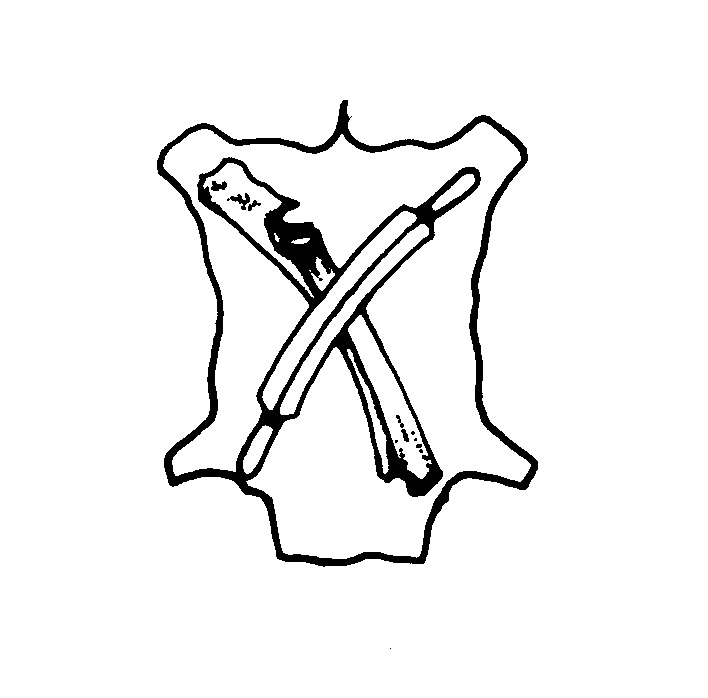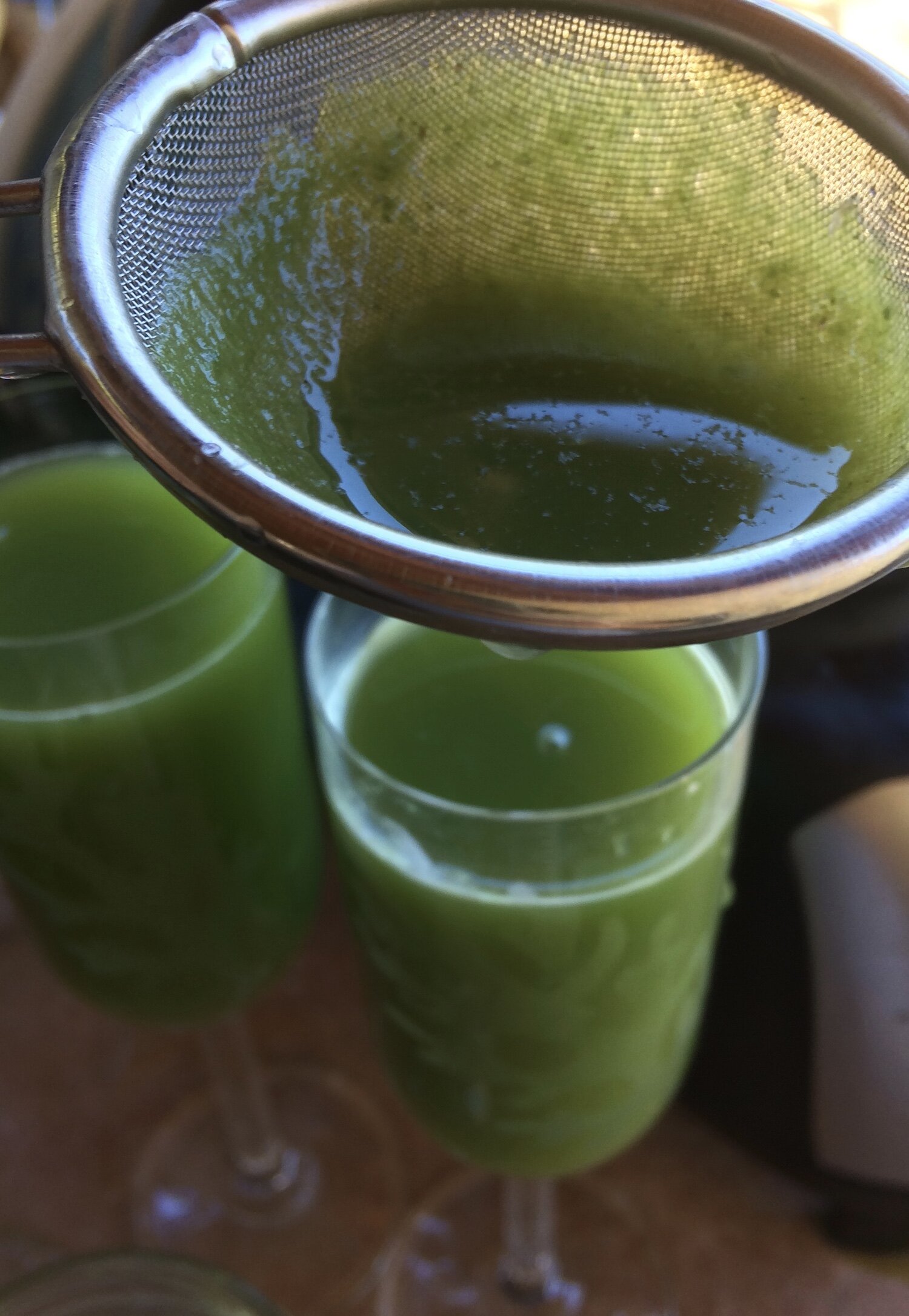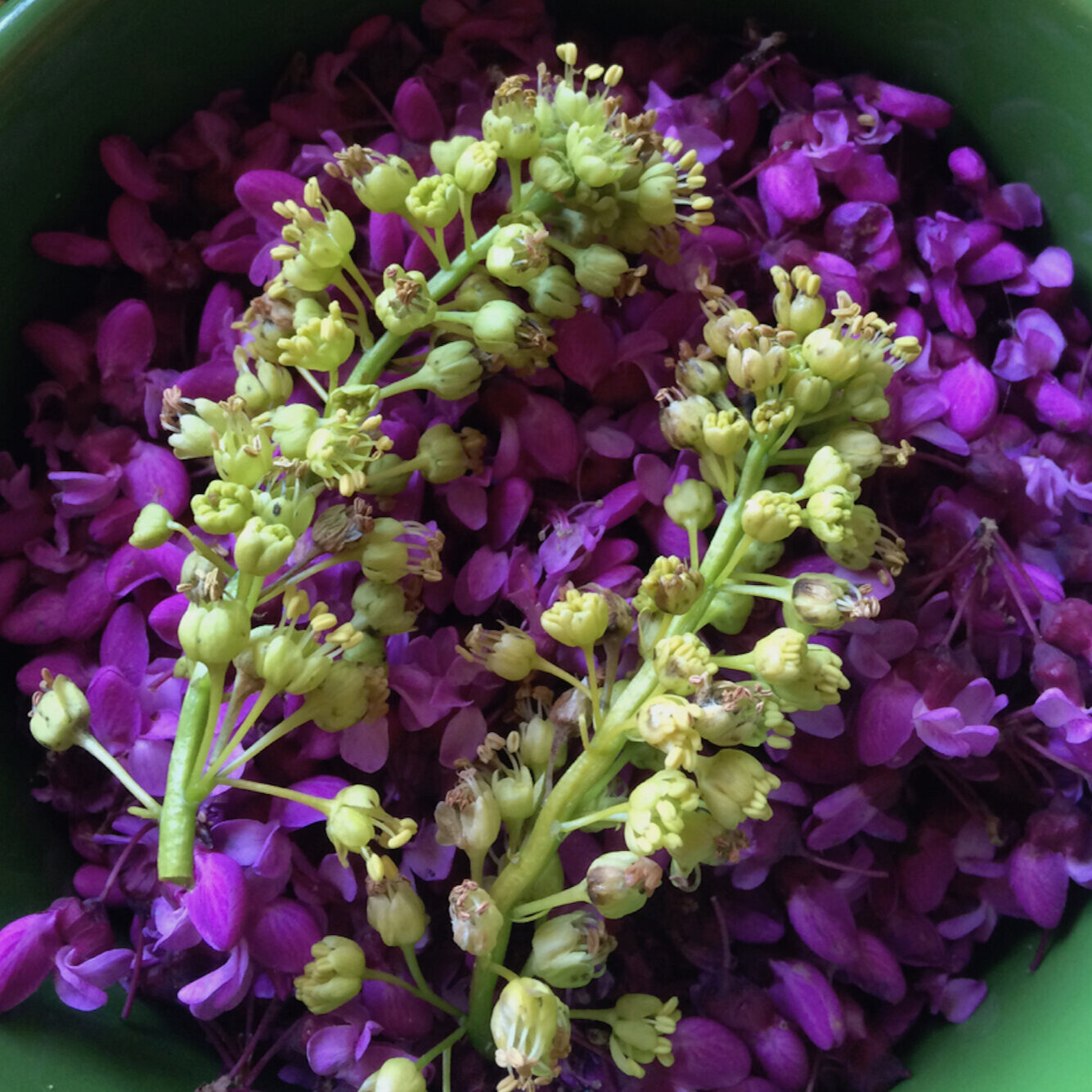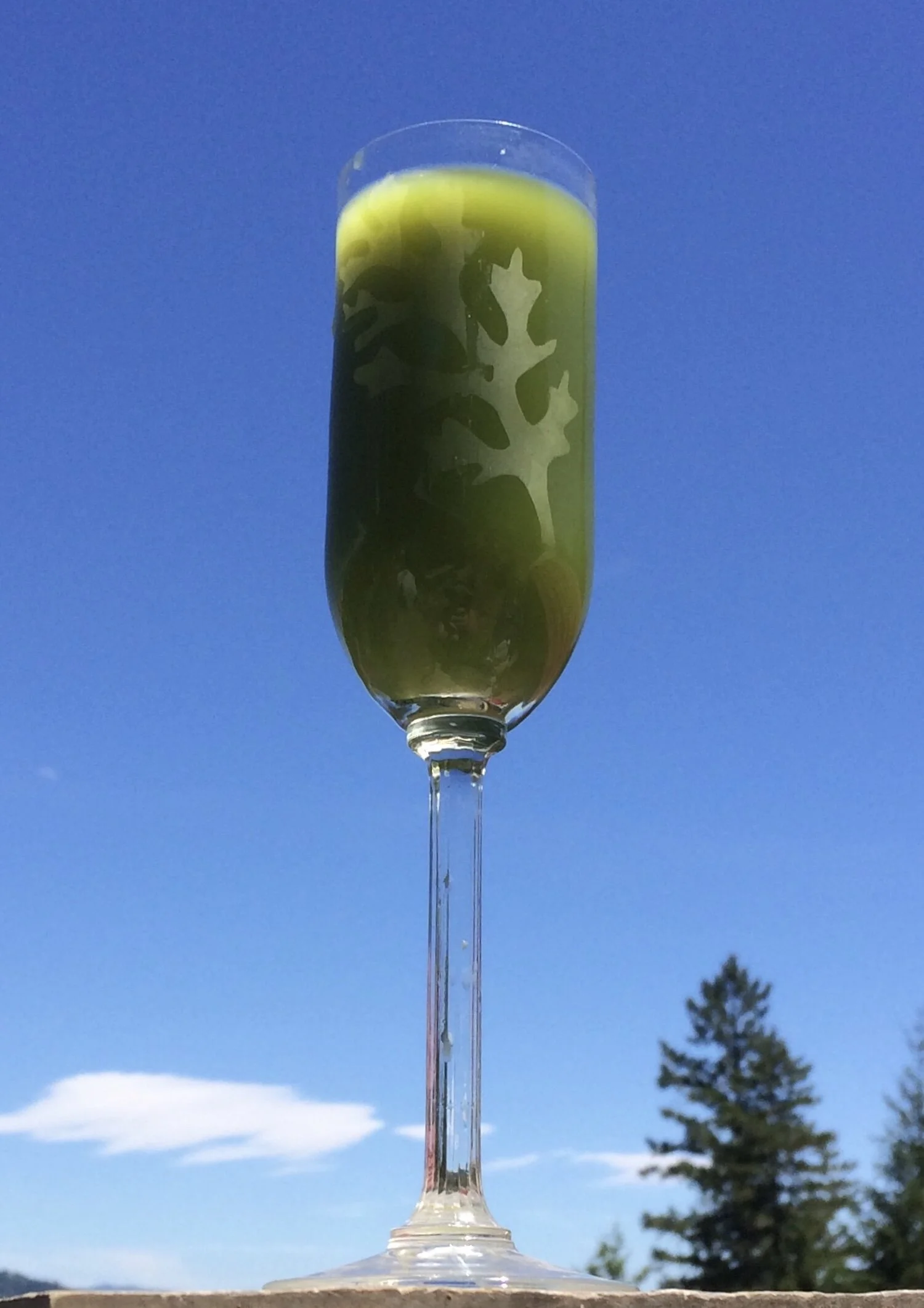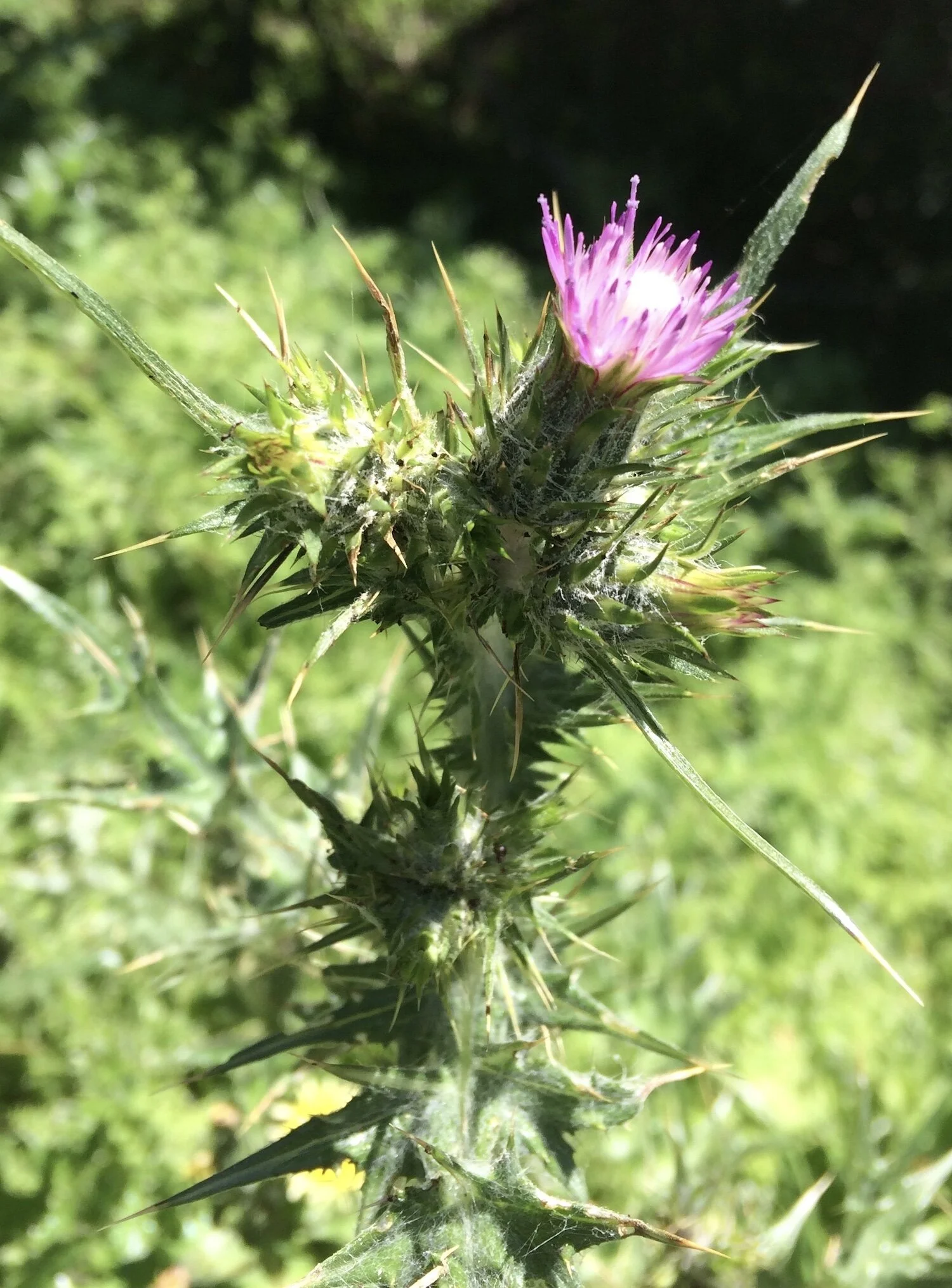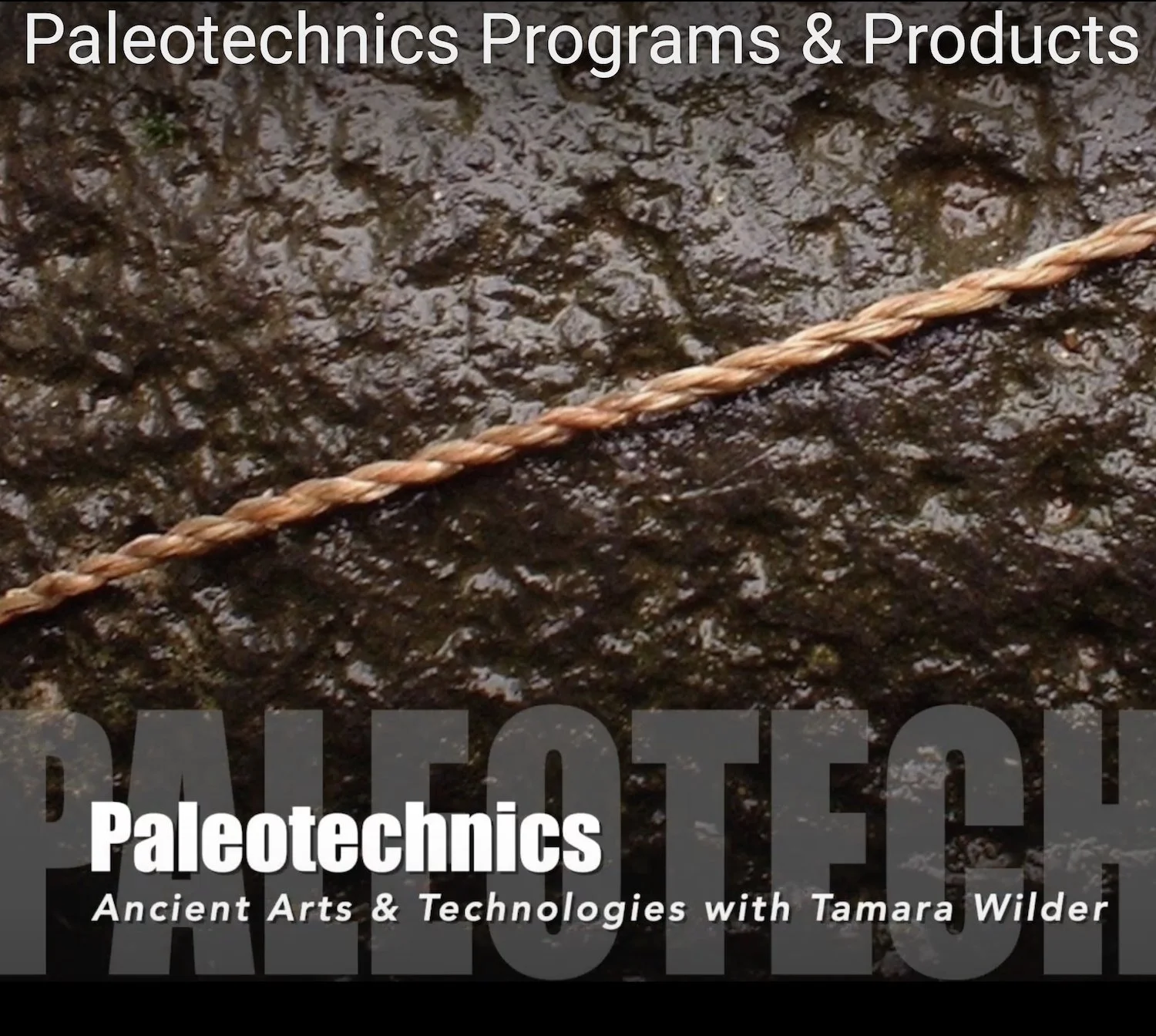Delicious & Refreshing Thistle Juice
DELICIOUS, REFRESHING & SUPER HEALTHY
Thistle juice is surprisingly mild and refreshing and even people who are hesitant to drink it usually love it!
These “mocktails” were shared with friends and were especially delicious with some sparkling cider added to the glass. They can also be made into cocktails by adding a shot of your favorite alcohol.
One of the most common and widespread of wild plants are Thistles.
They are also really easy to identify due to their propensity to poke. Those spiny defenses which at first make them seem unapproachable, are also a big part of why they taste so good, even when fully mature. Since their spikes protect them, they do not need to form bitter flavors to deter animals from eating them.
The huge variety of thistles that grow all around the world differ tremendously on many things, including whether they are annual or biennial, when they grow their leaves and flowers, the size of their leaves and flowers, the size and structure of their central stalk, and the size, number and severity of their spines. These factors can also differ widely depending on where an individual plant happens to be growing.
The thing that all thistles have in common is that they are all edible (as far as I know). They are also all very healthy to consume and are particularly good for the liver. Most people have heard about using Milk Thistle seeds and they are even sold in most stores, but it is not just the seeds and it is not just Milk Thistle that possesses these qualities. Regularly drinking thistle juice does the same!
It is also common to find several varieties of thistles in one area. In my yard, I have at least 2 distinct varieties which grow in slightly different ways. Just as the more early and abundant variety is finishing flowering and dying back, the later variety is just getting going and adds a good two months to the local thistle season.
Disclaimer: Be sure that you have properly identified any wild plant before eating it.
SUCCULENT YOUNG THISTLE WITH HUGE LEAVES
This young stage before the plant has started to go to flower is the ideal time to get the nicest leaves and is also the best time to get juicy, crispy stems.
CLOSE-UP OF THISTLE SPINES
The upward tilting angle makes it possible to reach in and grab from the bottom without getting pricked.
CLOSE-UP OF HUGE SUCCULENT LEAVES
These leaves are large enough that they can also be quickly made into salad or steaming greens.
Harvesting the fresh succulent stems and leaves of my thistle patch.
TUB OF YOUNG BUT EXCEPTIONALLY LARGE AND SUCCULENT THISTLE PLANTS
Stripping the leaves and fibrous bark off of a big thistle stalk.
LEAVES & STEMS
Thistle leaves ready for juicing and stems ready for either eating fresh or pickling.
USING PRUNERS
Another good way to harvest thistle leaves is to simply use pruners and cut them off the stalk.
TO TRIM OR NOT TO TRIM
Thistle leaves can be juiced spikes and all, but if the time is taken to cut of the spines with a pair of scissors, they are also excellent eating as either a salad or steamed greens.
Washing thistle leaves before putting them in blender to make thistle juice.
WASHING THISTLE LEAVES
Washing the leaves before blending cleans them but also makes them easier to handle and less prickly.
GETTING READY TO BLEND
Placing washed thistle leaves in a blender.
Juicers also work, especially with young succulent leaves.
READY TO GO
Blender filled with leaves and covered with water. This batch made almost 2 quarts of juice!
SEPARATION PROCESS
After blending, the fibrous mash immediately begins to separate from the juice, making beautiful swirling patterns as it progresses.
The separation process moves rather quickly.
Check out the beautiful swirls as the blended material separates into pulp and juice.
BLENDER OF JUICE
Waiting about 5 minutes allows the fibrous mass to consolidate at the top of the blender.
FINISHED JUICE
The contents of the blender is poured through either a fine strainer or a course strainer lined with porous cloth to filter out any fiber and/or spines.
FIBROUS PULP
The fibrous pulp which was strained out of the juice, where the spikes are still evident.
THISTLE IN FLOWER
As the spring progresses, the thistles start to form flowers, both at the tops of the plants but also at each branch down the stem.
GOING TO SEED
As the seeds mature, the flower head opens and little tufts of “thistle down” start to take flight on the wind,
THISTLE SEED
Even when much of the plant is still flowers, some heads will have already dispersed their seeds.
Timing when to harvest the thistle patch before it all goes to seed.
LEAVES & STEMS
The stems of more mature plants have gotten more fibrous and less juicy and are therefore not as prime for eating; however, their bark is fibrous enough to use for making string.
MORE MATURE PLANTS
Two harvested thistle plants, one with the root and one without.
BLENDER READY TO GO
A really nice quality of thistle greens is that, unlike many other greens, they do not get bitter as they age; so can be harvested anytime during their season.
SECOND KIND OF THISTLE
At a time when the other thistle has mostly gone to seed, this other thistle is just starting to head up and still has fresh succulent green leaves.
PUTTING LEMONS TO THE MIX
Additions like lemons, apples, juice, etc…. can add some extra tartness and sweetness which sets of the thistle flavor nicely.
BLENDING THE MIX
The color of the juice lightens considerably when lemons have been added.
BEES LOVE THISTLE FLOWERS
The differences between the different thistle varieties is mostly evident in their size and their timing. This variety which has a huge flower is also just starting to bloom a solid 2 months after the other variety.
THISTLE VARIETIES
The variety of thistles found around the world is immense, but as far as I have been able to find all of them are edible. Here you can see the dramatic difference in flower sizes between the two that commonly grow in my area.
The little nugget is the edible “heart” of the larger thistle head.
LATER SEASON LEAVES
At a time when the earlier growing thistle leaves are mostly gone, this later blooming variety is still in great shape.
SPECIMEN TO HARVEST
As an experiment I selected this plant to harvest from .
LEAVES GONE
Using a pruner I cut all the leaves off of the stem.
WASHED LEAVES
All the leaves from a single plant
LEAVES IN BLENDER
Leaves from single plant ready to add water, grapefruit pulp and lemon.
Thistle leaves, water, grapefruit pulp, one lemon and a small amount of loquat juice makes a “mocktail” that is quite delicious.
STRAINING THE JUICE
Pouring the juice through a fine strainer.
STRAINING PROCESS
Part way through.
Letting the strainer settle before pouring the remainder through.
Pouring the content through a fine sieve keeps any bits of thorn or fibrous materials out of the finished thistle juice.
PULP & JUICE
PULP WITH JUICE
Notice the juice forming in the bottom of the pulp jar.
RE-STRAINING THE PULP
Any remaining juice can be strained out of the pulp.
FINAL STRAINING
Getting any last bits of pulp as juice is poured into glasses.
PRODUCT OF ONE PLANT
The leaves of one small plant made 1 pint of juice which filled these 3 glasses perfectly.
MOCKTAIL IN GLASS
The sun streaming through the glass brings out many hues.
EXPLORE FURTHER
Wild Wisdom of Weeds
by Katrina Blair
Contains a fun to read chapter dedicated to eating thistles, jam packed with stories, poetry, recipes and tips for using and harvesting.
Making Thistle Juice with http://LongevityPower.com
